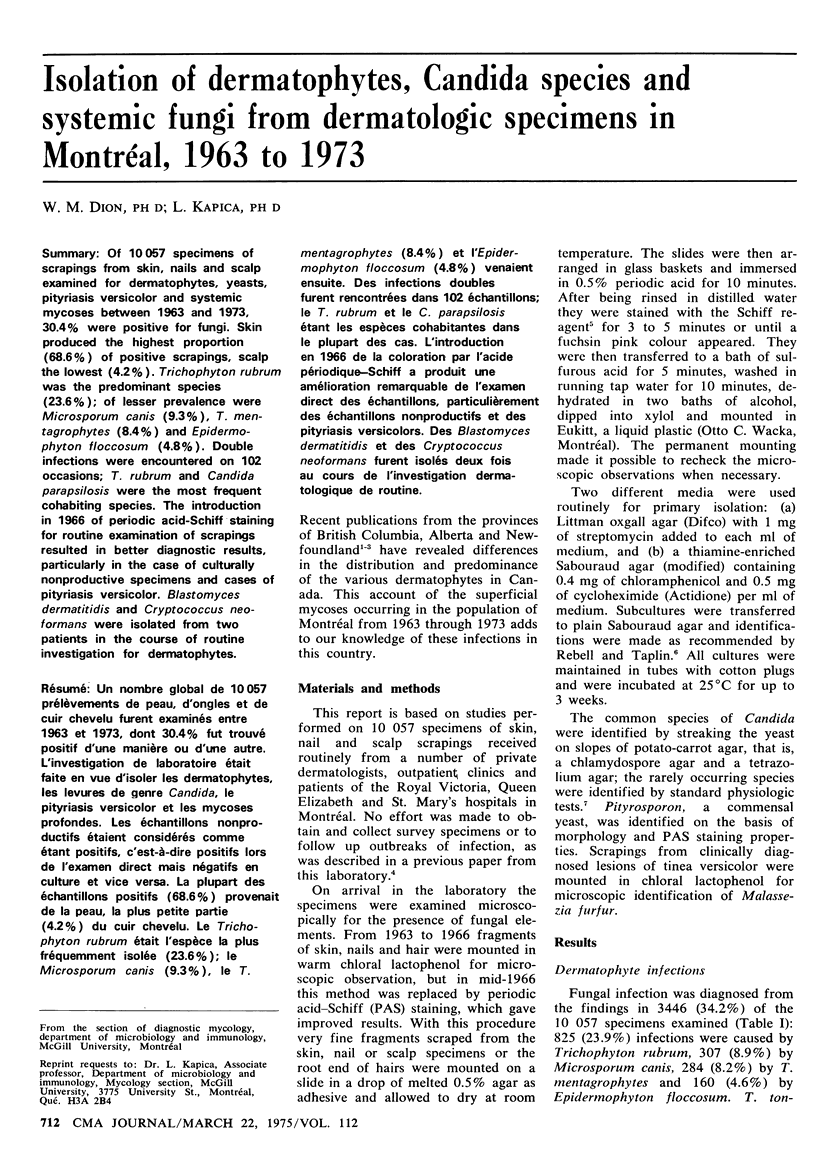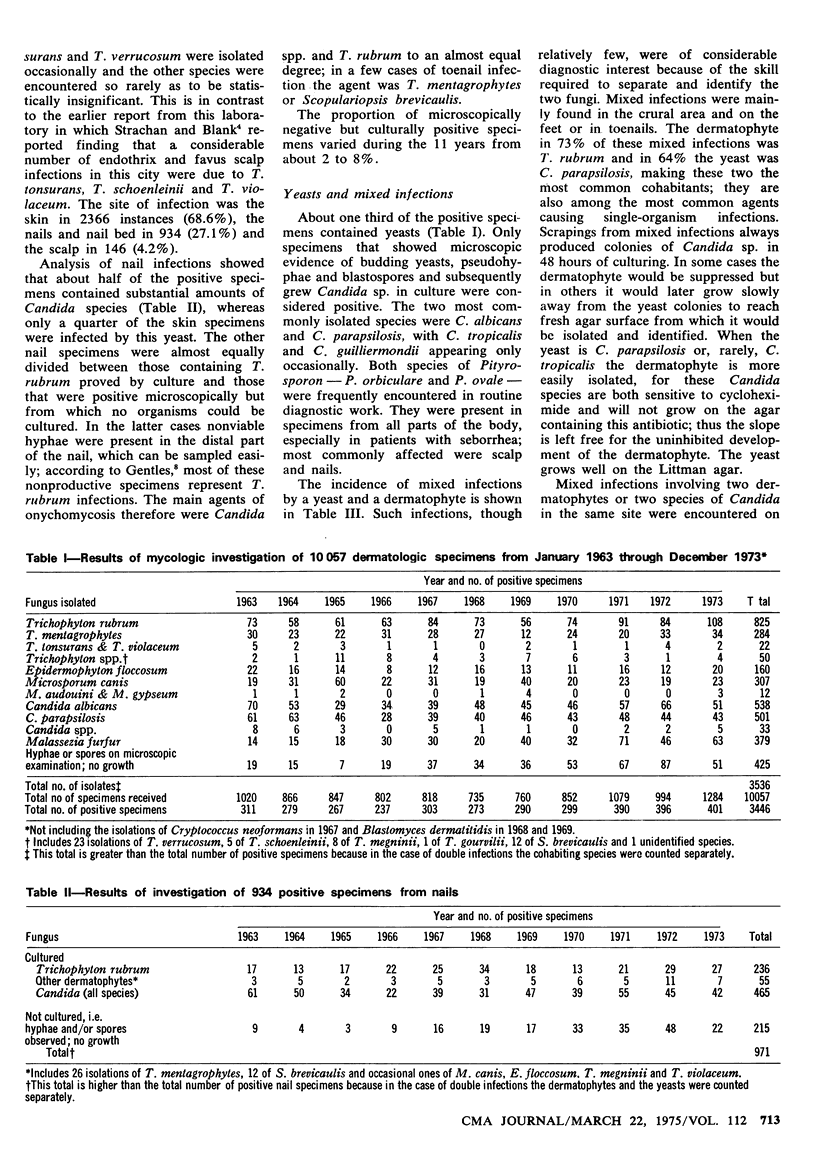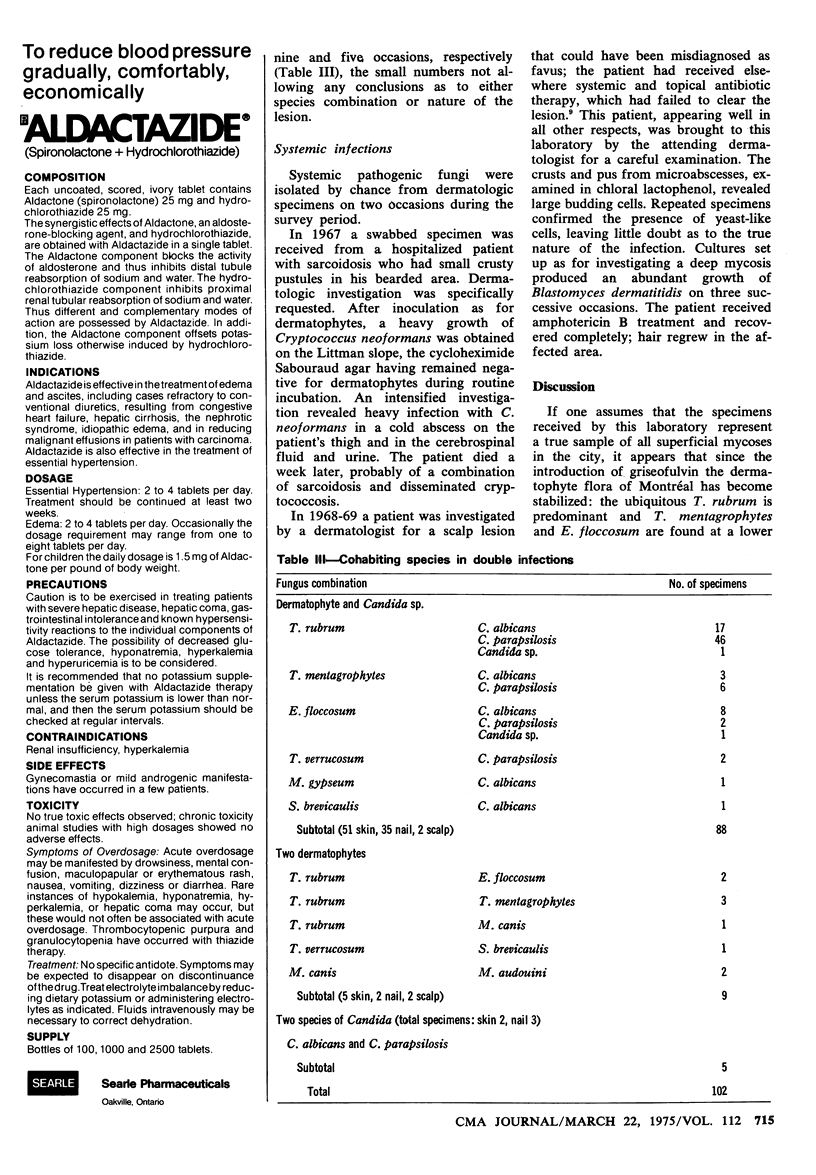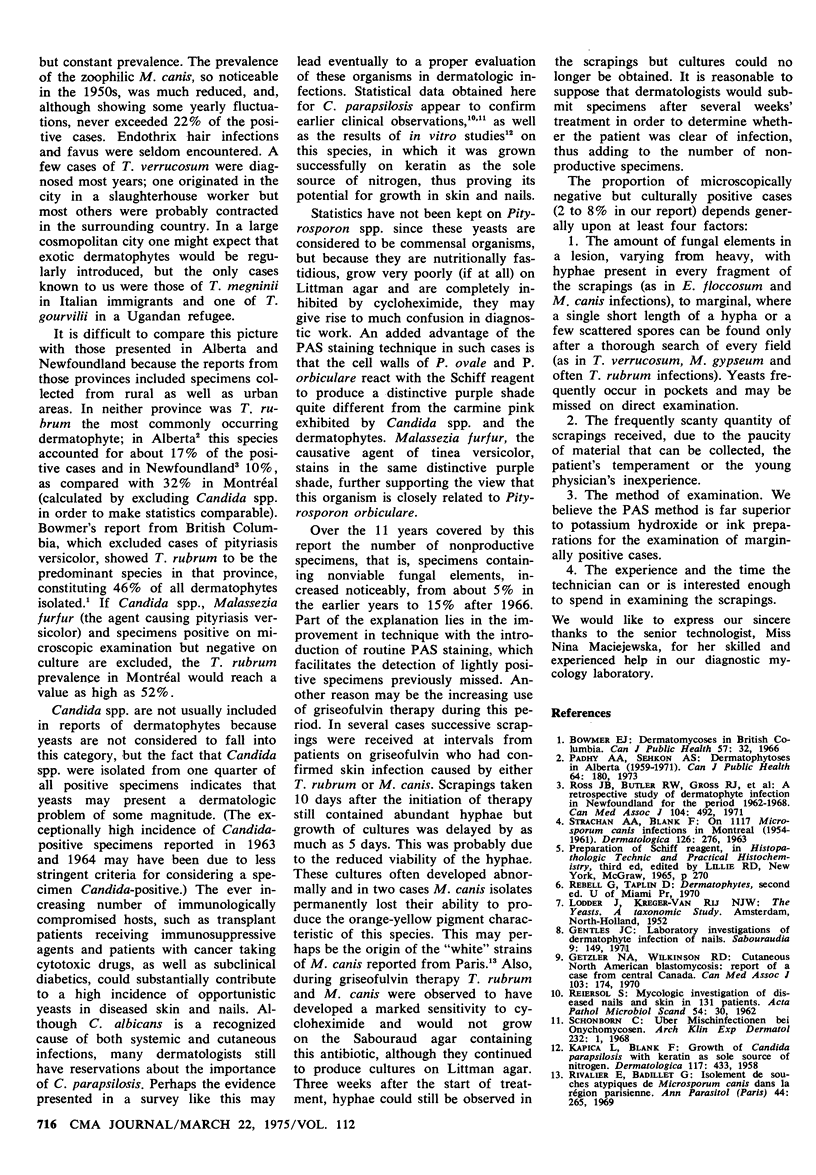Abstract
Of 10 057 specimens of scrapings from skin, nails and scalp examined for dermatophytes, yeasts, pityriasis versicolor and systemic mycoses between 1963 and 1973, 30.4 percent were positive for fungi. Skin produced the highest proportion (68.6 percent) of positive scrapings, scalp the lowest (4.2 percent). Trichophyton rubrum was the predominant species (23.6 percent); of lesser prevalence were Microsporum canis (9.3 percent), T. mentagrophytes (8.4 percent) and Epidermophyton floccosum (4.8 percent). Double infections were encountered on 102 occasions; T. rubrum and Candida parapsilosis were the most frequent cohabiting species. The introduction in 1966 of periodic acid-Schiff staining for routine examination of scrapings resulted in better diagnostic results, particularly in the case of culturally nonproductive specimens and cases of pityriasis versicolor. Blastomyces dermatitidis and Cryptococcus neoformans were isolated from two patients in the course of routine investigation for dermatophytes.
Full text
PDF



Selected References
These references are in PubMed. This may not be the complete list of references from this article.
- KAPICA L., BLANK F. Growth of Candida parapsilosis with keratin as sole source of nitrogen. Dermatologica. 1958 Dec;117(6):433–454. doi: 10.1159/000255627. [DOI] [PubMed] [Google Scholar]
- REIERSOL S. Mycologic investigation of diseased nails and skin in 131 patients. Acta Pathol Microbiol Scand. 1962;54:30–38. [PubMed] [Google Scholar]
- Rivalier E., Badillet G. Isolement de souches atypiques de Microsporum canis dans la région parisienne. Ann Parasitol Hum Comp. 1969 May-Jun;44(3):265–272. [PubMed] [Google Scholar]
- Ross J. B., Butler R. W., Cross R. J., Fardy P. W. A retrospective study of dermatophyte infection in Newfoundland for the period 1962-1968. Can Med Assoc J. 1971 Mar 20;104(6):492–496. [PMC free article] [PubMed] [Google Scholar]


